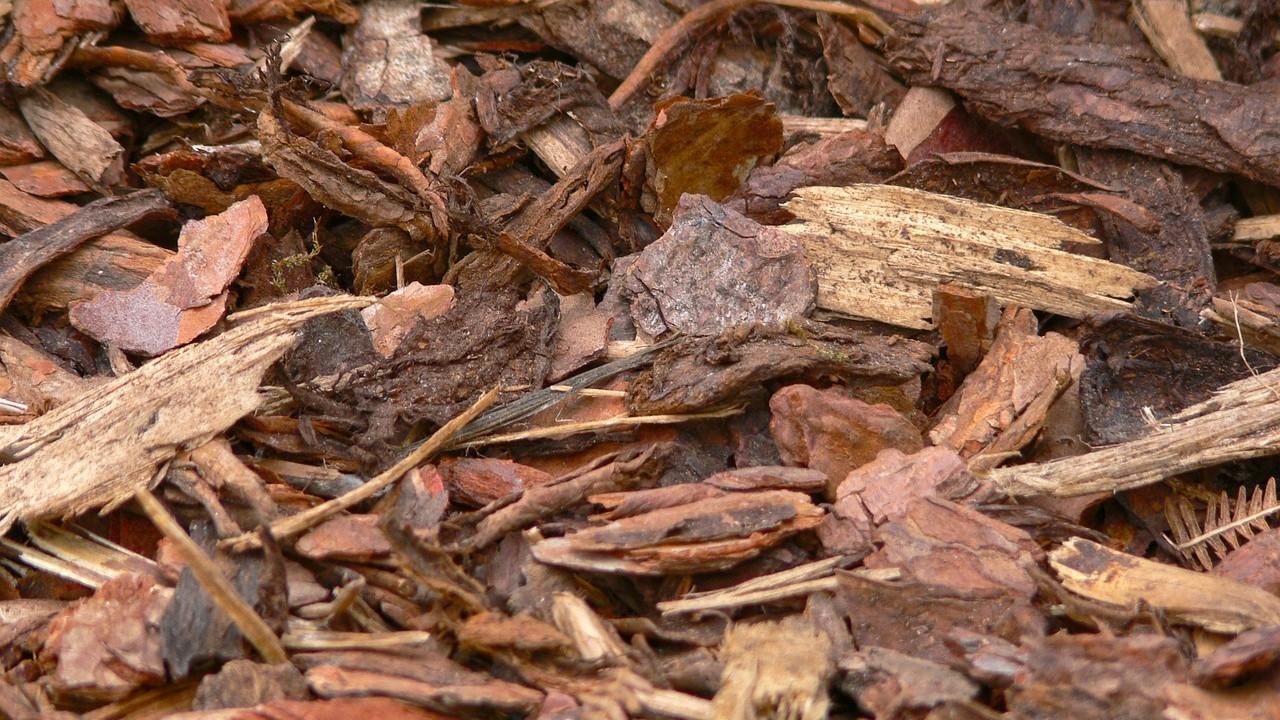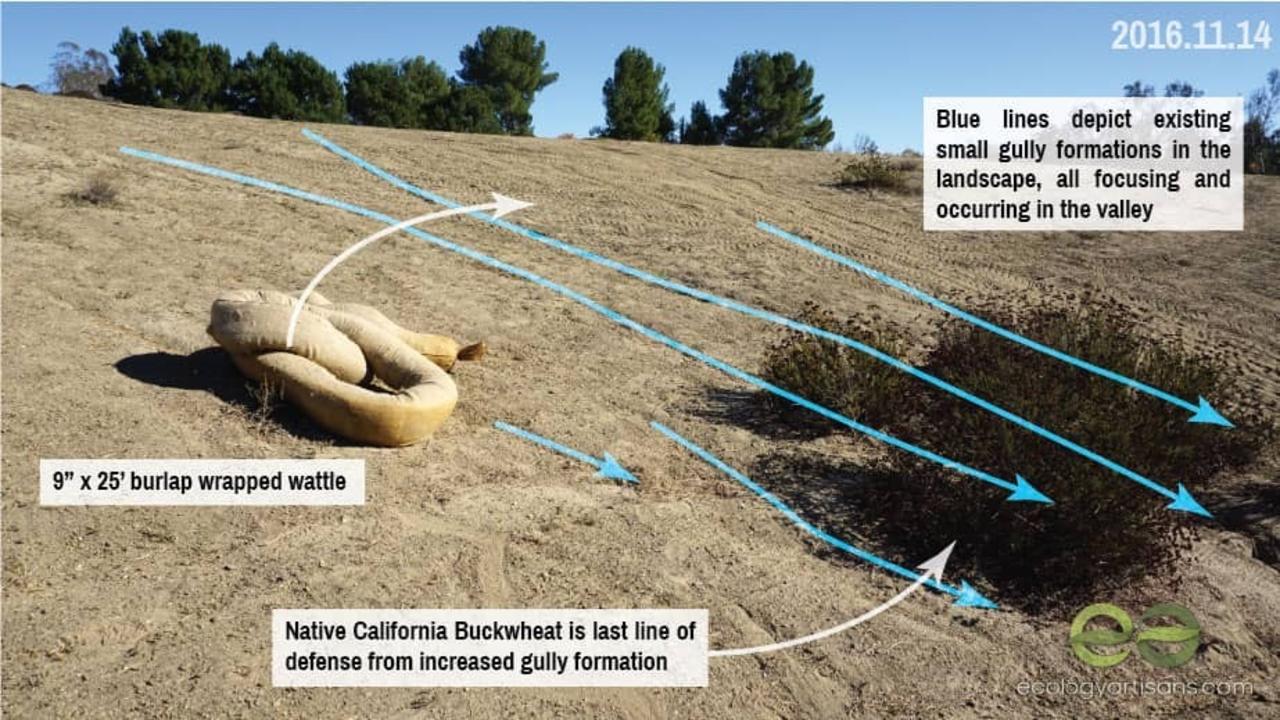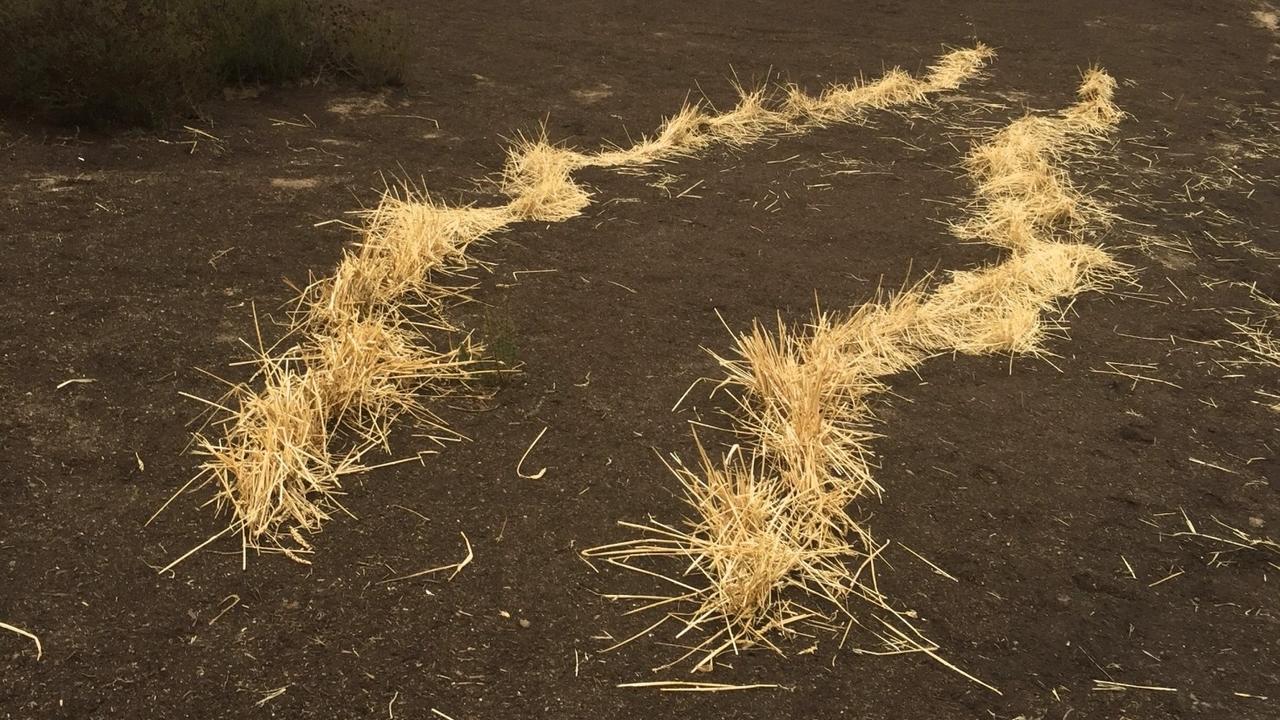5 Keys To Building Healthy Soil

Everyday we hear of soil scientists, farmers, and gardeners alike discovering something new about the rich world under our feet: soil! Soil is an amazing living ecosystem in which we rely so heavily on for our food, medicine, shelter, and clothing.
Our work at Ecology Artisans is heavily influenced by soil regeneration pioneers such as Dr. Elaine Ingham, Gabe Brown, Dr. Christine Jones, Colin Seis, and Darren J. Doherty. We as a company believe that healthy soil solves many issues that our society faces. Stormwater runoff, droughts, and soil loss become mitigated when we have healthy soils that can store water for longer periods of time. Not to mention that healthy soils create healthy food, which leads to a healthier, less disease prone and robust society.

A 1% increase in organic matter in our soil increases water holding capacity by 25,000 gallons per acre. Photo courtesy of Kiss The Ground.
Whether you are a backyard homesteader, native plant landscape lover, or large scale fa...
Why Mulch is Great for Your Garden

Mulch is great for your garden as well as our planet!
Water is a precious resource so it's extremely important to conserve water in our landscapes and mulch is a great way to do that. Treat your plants and earth well and your garden will flourish!

Mulch protects plants from UV rays
UV Rays that enter dry, exposed soil can kill the roots of your plants. In addition, the sun will evaporate precious water resources in the soil. A layer of mulch acts like sunscreen to protect the plant’s roots and prevents water from evaporating from the soil.
Mulch acts like a sponge to soak up water
Mulch acts like a sponge, soaks up water and stores it for future use. In addition, it reduces the amount of water that evaporates from the soil into the atmosphere. Your plants will have more water, and you will be able to to water your garden less frequently. Choose coarser mulches as fine mulches can sometimes create an impenetrable layer over your soil.
Mulch keeps out weeds
Mulch keeps out wee...
Effective Erosion Control: Straw Wattle

Straw wattles (aka fiber rolls) are fiber filled mesh tubes used to interrupt and slow water descending a slope through sheet flow and/or minor rill/gully formations.
Straw Wattles

Straw wattles help slow, spread and sink water in addition to capturing sediment and other runoff.
Used extensively in transportation and construction as best management practice (BMP), straw wattles are useful tools for effective runoff and sediment control. Coupled with erosion control techniques like mulching, jute mats, soil pitting or fish scale straw mulch, wattles help keep runoff and sediment for moving further downslope on a site.
Straw Wattles / Fiber Rolls

Cross section of proper wattle installation using five-stake method (for 25' wattles).

Our suggestion of overlapping wattle ends. You can also butt ends together, just monitor to ensure no water is channeling through the ends.
Resources abound covering various approaches towards wattle installation. Google "bmp straw wattle [YOUR ST...
Effective Erosion Control: Fish Scale Straw Mulch

With record breaking rain and snow across California during the 2016-2017 winter, residents are being confronted with devastating and costly erosion control issues. We will be covering some simple, do-it-yourself effective erosion control techniques to help you prepare for future rain events and limit the amount of soil and water loss off your site.
Fish Scale Straw Mulch

Lines of fish scale straw mulch installed to test sediment capture and erosion reduction.
We first learned about fish scale straw mulch* as an erosion control technique in David A. Bainbridge's essential tome on erosion control, A Guide for Desert and Dryland Restoration: New Hope for Arid Lands. Its simple process, materials and installation made it one of our top choices for DIY erosion control projects. *The term "fish scale" comes from the curved shape cut from the spade entering the soil.
Treatment Summary
Weed-free wheat or rice straw fish scale rows on contour are inexpensive and easy to install. The...
Soil Erosion Case Study: Meadowview Open Space
Preventing and treating soil erosion must be the primary focus for any land tender, land owner, community or society. When we neglect soil loss for any myriad reasons (short term economic gain, apathy, ignorance, etc.), we jeopardize the possibility for future generations to cultivate and nourish themselves. As ecological land designers, we are trained to see the characteristics of degraded land and to provide treatments to rehabilitate and reinvigorate it.
Soil Erosion is No Joke
Land and environmental degradation is the number one cause of life migration. When food no longer grows on land, life moves on. Humans are no different, yet our short historical attention span has shown us to forget this pattern. I highly recommend reading Dirt: The Erosion of Civilizations by David Montgomery to learn more about the importance of protecting soil (or watch his lecture below).

Any increase or decrease in these three factors will either increase or decrease erosion in landscapes.
Los...
Stormwater Management in the Desert

Santa Fe's Botanical Garden where they have a thoughtfully designed, and beautiful, stormwater management system amongst its drought tolerant plantings. Using a design called the zuni bowl, rain water flows are prevented from eroding soft soil through the use of appropriately placed rocks. The bowl acts as a large infiltration basin allowing water to slowly percolate into the ground. As the bowl fills, it evenly overflows down rock lined paths leading to another zuni bowl, and so on until it reaches its final storm drainage. The design and installation of this system was done by Craig Sponholtz of Watershed Artisans.

This zuni bowl captures stormwater to slow it down for calm and slow passage down to culverts.

View from the zuni bowl above looking out to a large, grass seeded percolation basin.

Silt trap basins work best when they are flat, long, wide, and rock lined only on the sides for easy silt excavation.

Another stormwater management catchment to slow and sink rain wa...
